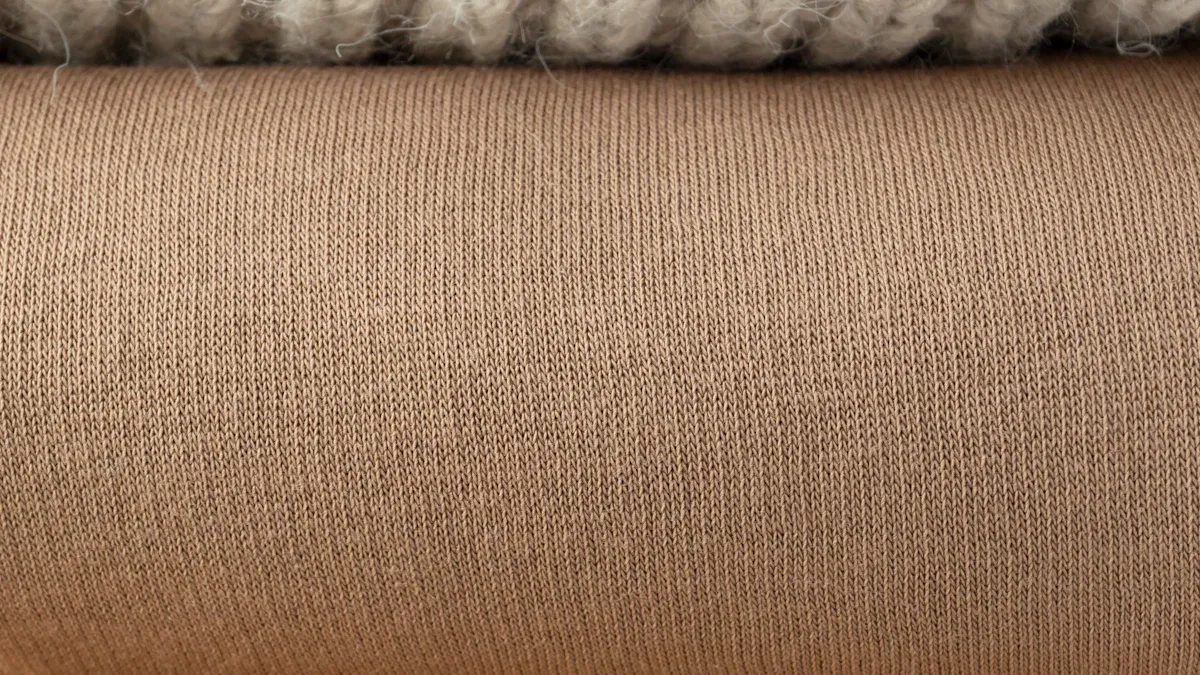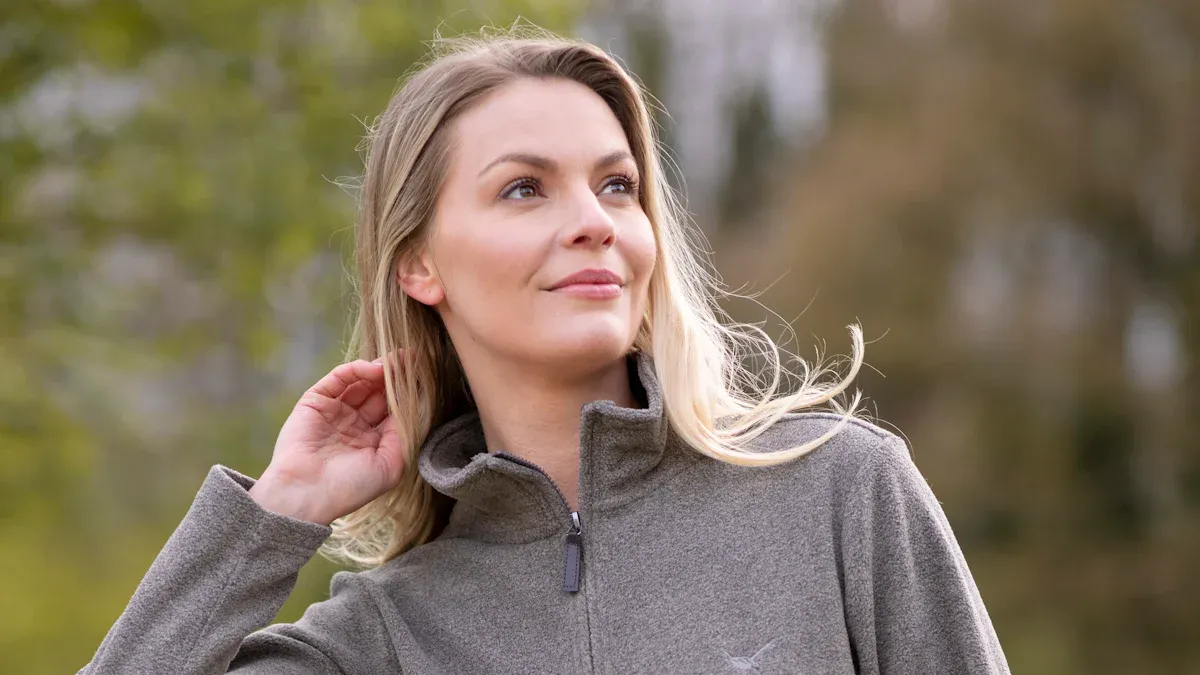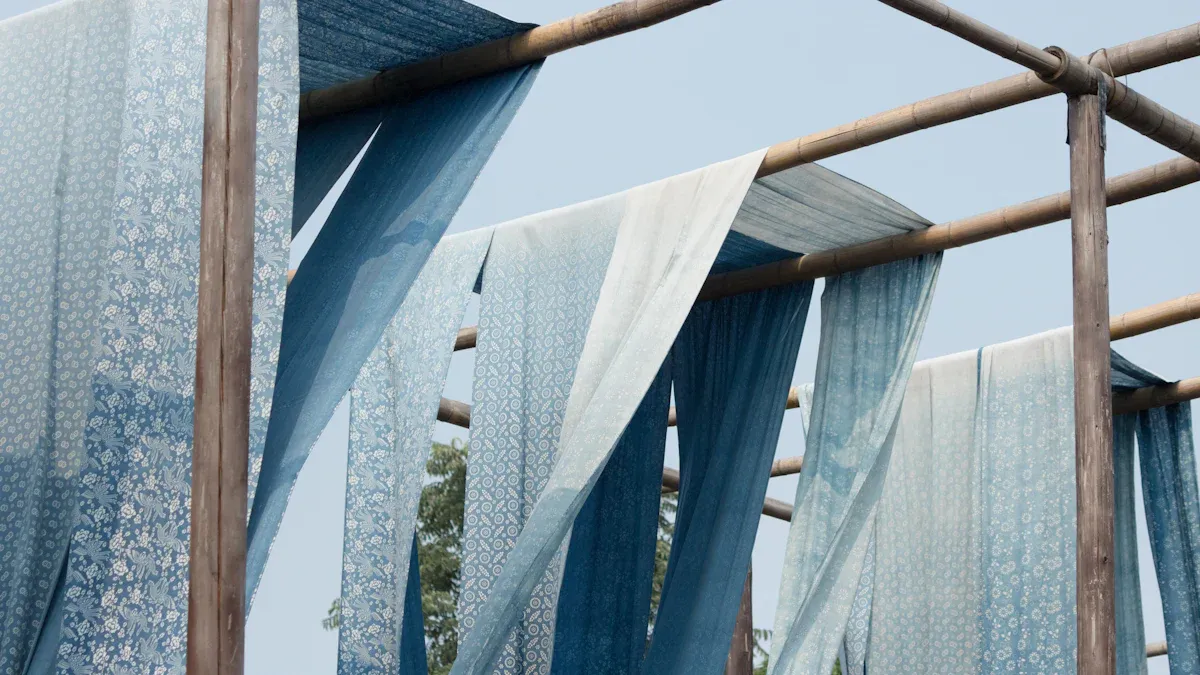
Bamboo clothing is a sustainable choice for sustainable fashion. This earth-friendly bamboo fabric is an environmentally friendly eco-friendly alternative. The full sustainability of bamboo depends on its processing, which affects its environmental impact. Your choice has a big impact.
Selecting the right bamboo cloth fabric ensures a lower environmental impact. This decision supports the benefits of bamboo and protects the environment. You get a truly sustainable and environmentally friendly piece of bamboo clothing that helps the environment and promotes sustainable fashion. The benefits are clear for long-term sustainability.
Key Takeaways
- Bamboo is a very renewable plant. It grows fast and needs little water. This helps the environment.
- The way bamboo becomes fabric matters a lot. Bamboo lyocell is the best choice. It uses a clean process that reuses water and chemicals.
- Bamboo clothing can break down naturally. This helps reduce trash. Always choose 100% bamboo for this benefit.
- Look for special labels when you buy bamboo clothes. Certifications like FSC and OEKO-TEX show the product is good for the planet and safe for you.
The Agricultural Benefits of Bamboo Cultivation
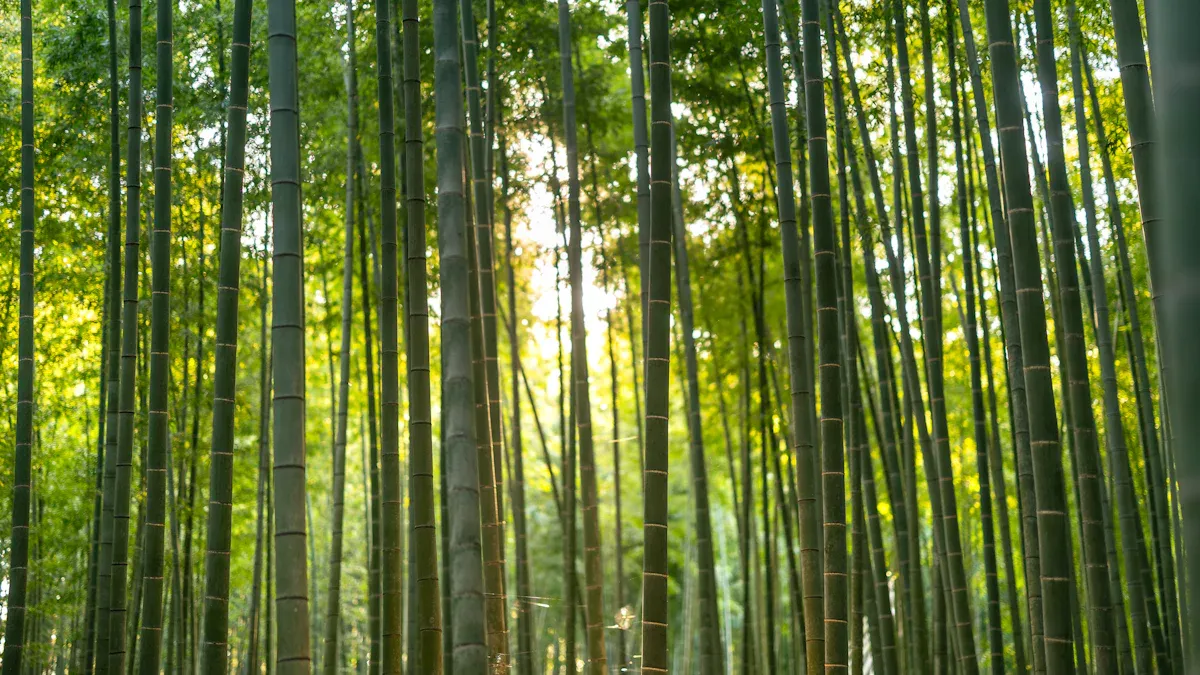
The journey of sustainable bamboo clothing begins in the field. The agricultural benefits of bamboo cultivation create a positive impact on the environment. You can appreciate the full sustainability of your bamboo clothing by understanding its origins. These benefits show why bamboo is a truly sustainable resource. The positive impact on the environment is significant.
A Highly Renewable Resource
You will find that bamboo is one of the fastest-growing plants on Earth. This rapid growth is one of its key sustainability benefits. Moso bamboo, often used for bamboo fabric, can reach its full height in just 60 days. Some bamboo shoots grow nearly 4.8 centimeters (1.9 inches) per hour. This incredible speed makes bamboo a highly renewable resource with a minimal environmental impact. The benefits of this quick cycle are clear. This sustainable plant offers many benefits for the environment.
One acre of bamboo can produce up to 10 times more fiber than an acre of cotton. This efficiency means less land is needed to create your bamboo clothing, reducing the overall impact on the environment.
Low-Impact Farming and Water Efficiency
Bamboo offers major sustainability benefits through its low-impact farming needs. The plant thrives with very little human intervention. This has a positive impact on the local environment. Farmers can grow bamboo without many common chemicals. Sustainable practices for bamboo cultivation avoid:
- Synthetic fertilizers
- Chemical pesticides
- Herbicides
This natural resilience reduces the impact on the soil and water. Bamboo also requires significantly less water than cotton. It often grows using only natural rainfall. This water efficiency is a huge benefit for the environment and a key part of its sustainability. Choosing bamboo clothing supports these sustainable practices and their positive impact.
Improving Soil Health and Air Quality
The natural benefits of bamboo extend below the ground and into the air. Bamboo’s dense root system binds soil particles together. This action helps prevent soil erosion, protecting the land. This has a lasting, positive impact on the environment. Above ground, bamboo forests are powerhouses for cleaning the air. A bamboo forest can absorb up to four times more carbon dioxide than a similar group of trees. This makes bamboo an environmentally friendly choice with global benefits. Your sustainable bamboo clothing starts with a plant that actively improves the environment. The sustainability of bamboo has a real impact. The benefits are widespread.
From Plant to Fabric: The Sustainability of Production
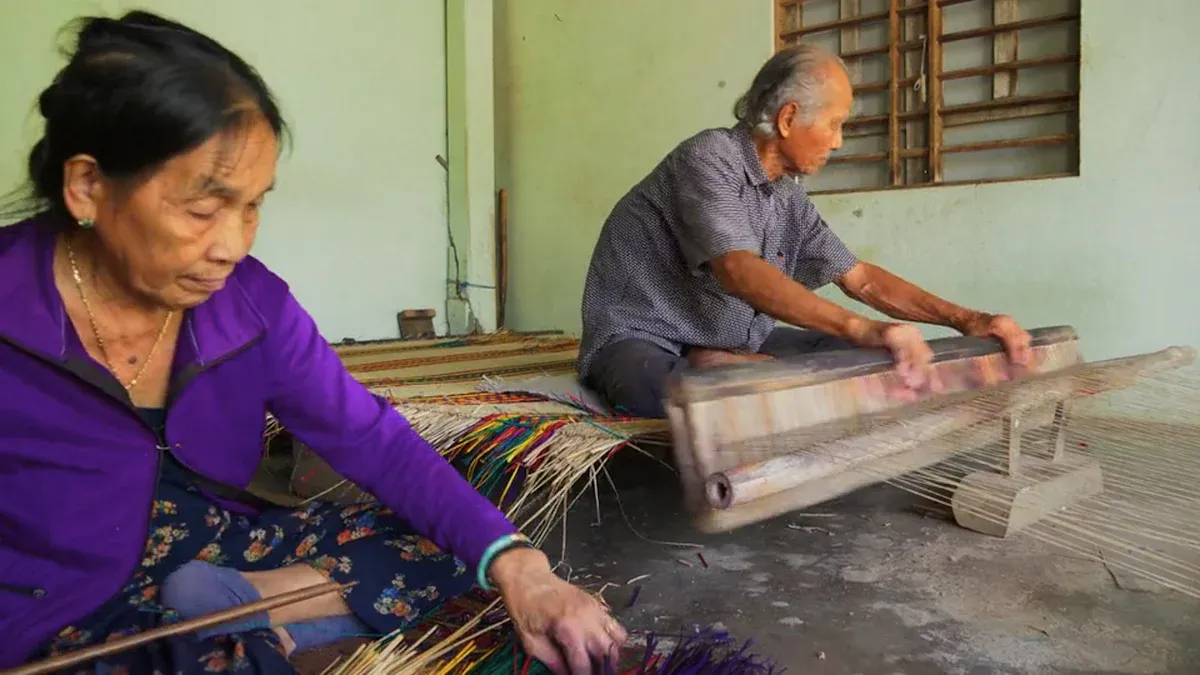
How you turn a bamboo stalk into soft bamboo clothing determines its true sustainability. The agricultural benefits of bamboo are clear, but the manufacturing process has a major impact on the environment. Understanding these production methods helps you make a truly sustainable choice for your wardrobe and for sustainable fashion. The journey from plant to fabric is where your choice matters most.
Mechanical Processing: Bamboo Linen
You can think of mechanical processing as the most natural way to create bamboo fabric. This method, which produces a textile often called “bamboo linen,” avoids harsh chemicals. It relies on physical force and natural enzymes to create the yarn for your bamboo clothing. The process is labor-intensive and has a significant impact on the final texture.
The traditional method for creating this type of bamboo fabric involves several steps:
- Workers pound newly emerged bamboo culms with stones.
- They then soak the bamboo in water for several days in a process called retting.
- Finally, they comb the material to separate the soft fibers, which are then spun into yarn.
This technique requires a lot of energy and labor, making it less common and more expensive. The resulting bamboo fabric has a rougher, linen-like feel. While this method has a lower chemical impact, the energy used for hot pressing and drying still affects its overall sustainability. This process highlights the trade-offs in creating a sustainable product.
Chemical Processing: Viscose vs. Lyocell
Most bamboo fabric on the market today comes from chemical processing. However, not all chemical methods have the same impact on the environment. You need to understand the critical difference between the viscose process and the lyocell process to make an informed decision about your bamboo clothing and its impact on sustainable fashion.
The conventional method is the bamboo viscose process. It is widespread but carries a heavy environmental cost. To extract cellulose from the bamboo, factories use a chemical-heavy procedure.
This process exposes workers and the environment to hazardous substances.
- Carbon Disulfide: This highly toxic chemical is used to dissolve the bamboo pulp. It is linked to severe nervous system and cardiovascular damage in workers.
- Sodium Hydroxide: Also known as lye, this corrosive chemical can cause severe burns.
- Sulfuric Acid: This is used to harden the fibers and is also highly corrosive.
When factories fail to manage these chemicals properly, the impact on the environment is devastating. Untreated wastewater pollutes rivers and lakes, killing aquatic life and making local water sources undrinkable. This production method undermines the agricultural benefits of bamboo and harms communities, making it a poor choice for sustainable fashion. The negative impact is undeniable.
Why Closed-Loop Lyocell is the Best Choice
The best choice for your bamboo clothing is bamboo lyocell. This modern production method offers all the benefits of bamboo fabric without the harmful environmental impact of the viscose process. It represents a huge leap forward in the sustainability of textile production and is a cornerstone of ethical production.
The lyocell process uses a “closed-loop” system. This means the resources used are captured and reused instead of being released into the environment. Here’s why it’s a superior, environmentally friendly choice for any bamboo fabric blend:
- Non-Toxic Solvent: Instead of carbon disulfide, the lyocell process uses a non-toxic organic solvent called amine oxide to dissolve the bamboo pulp. This makes the process much safer for workers and the environment.
- Water and Solvent Recycling: This is the biggest of the benefits. In a closed-loop system, over 99% of the solvent and water are recovered and continuously reused. This drastically reduces water consumption and prevents chemical pollution, minimizing the impact on the planet.
Choosing bamboo clothing made with the lyocell process ensures you get a soft, high-quality bamboo fabric blend with maximum sustainability. Companies with advanced production capabilities, like Suerte Textile, leverage modern techniques to create a variety of bamboo fabric blend options, supporting the shift toward more ethical and sustainable fashion. When you select bamboo lyocell, you support a system that protects workers, conserves water, and eliminates pollution. Your choice has a direct, positive impact on the future of sustainable fashion and the health of our environment. This is the pinnacle of bamboo cloth fabric sustainability.
The End-of-Life Benefits of Bamboo Clothing
When your sustainable bamboo clothing reaches the end of its life, its journey is not over. The end-of-life benefits of bamboo fabric offer a final, powerful advantage for the environment. Your choice of sustainable bamboo clothing has a positive impact that lasts. This final stage of sustainability is a key reason to choose this material.
Natural Biodegradability
You can feel good knowing your bamboo clothing has a natural end. Pure bamboo fabric is biodegradable. This means it can break down and return to the soil. This process has huge benefits for the environment. In the right compost environment, some types of bamboo fabric show significant breakdown in just a few weeks. This rapid decomposition is one of the great sustainability benefits of bamboo clothing. The positive impact on the environment is clear. Your sustainable bamboo clothing completes its lifecycle, reducing landfill waste. This is a core part of its sustainability.
The ability of bamboo fabric to decompose is a major win for a cleaner planet. This natural process shows the true sustainability of your bamboo clothing.
A Stark Contrast to Synthetic Fibers
You can see the benefits of bamboo fabric when you make a comparison to synthetic materials. The environmental impact of fabrics like polyester and nylon is significant. These materials can sit in a landfill for a very long time.
- Polyester & Nylon: Can take up to 200 years to decompose.
- Sustainable Bamboo Fabric: Can decompose in a matter of months to a year.
This stark comparison highlights the long-term pollution caused by synthetic fibers. When you choose sustainable bamboo clothing, you avoid adding to this lasting waste problem. Your decision has a direct impact on the health of the environment. Choosing bamboo clothing is a sustainable choice with lasting benefits.
Conditions for Effective Decomposition
You should know that how your bamboo clothing breaks down depends on its type. For the best environmental impact, the bamboo fabric must be pure. A sustainable bamboo fabric like lyocell is an excellent choice. Studies show it can biodegrade in about six months under industrial composting conditions.
However, the impact changes if the bamboo fabric is blended with other materials. For example, a bamboo fabric with 5% spandex will not fully decompose. The bamboo fibers will break down, but the spandex will leave a thin plastic netting behind. To get the full biodegradable benefits, you should choose 100% bamboo clothing. Your selection of a pure, sustainable bamboo fabric ensures the best outcome for the environment and true sustainability.
How to Choose Sustainable Bamboo Cloth Fabric
You now know the journey of bamboo from a fast-growing plant to a finished garment. Your final step is learning how to choose a truly sustainable bamboo cloth fabric. Making an informed choice empowers you to support ethical production and contribute to a healthier planet. Your purchasing decisions have a real impact on the future of sustainable fashion.
Understanding Key Certifications
Navigating the world of sustainable textiles can be confusing. Certifications act as your trusted guide, verifying that a brand’s claims about sustainability are true. When you shop for bamboo clothing, you should look for these key labels to ensure you are making an eco-friendly choice.
Forest Stewardship Council (FSC): This is your guarantee for responsible sourcing. FSC certification ensures that the bamboo comes from responsibly managed forests that provide environmental, social, and economic benefits.
- It confirms the bamboo is harvested in a way that does not harm the forest’s ecosystem.
- It protects the rights of Indigenous peoples and forest workers.
- It shows a commitment to conserving forests and reducing deforestation.
OEKO-TEX STANDARD 100: This label tells you the final bamboo fabric is safe for your skin. It certifies that the product is free from harmful levels of toxic substances. For a product to earn this certification:
- Every single component, from the thread to the buttons, must be tested.
- The bamboo fabric is tested for over 1,000 harmful substances.
- The certification requires annual renewal and testing to maintain its validity.
Organic Certifications (USDA Organic or Ecocert): These certifications focus on how the raw bamboo is grown and processed. An organic certification for bamboo means:
- The bamboo is grown without any synthetic fertilizers, pesticides, or chemicals.
- If the final bamboo fabric is certified organic, it must be made using the mechanical process (bamboo linen), as this is the only method that qualifies.
Prioritizing Bamboo Lyocell
You learned that the production method is critical for the sustainability of bamboo fabric. When you shop, you should always prioritize bamboo lyocell. This modern, closed-loop process offers the best combination of luxury, performance, and environmental responsibility. It is the most sustainable choice for your bamboo clothing.
The performance benefits are also clear. Bamboo lyocell is not only better for the planet but also a superior fabric for you to wear.
| Feature | Bamboo Viscose | Bamboo Lyocell |
|---|---|---|
| Softness | High | Higher |
| Durability | Moderate | High |
Choosing bamboo lyocell means you get a softer, stronger, and longer-lasting garment. This commitment to quality and sustainability makes it the ideal choice for anyone looking to build a wardrobe rooted in eco-friendly fashion. The benefits of this advanced bamboo fabric are undeniable.
Finding Transparent Brands like Suerte
Your final tool for making a sustainable choice is brand transparency. A truly ethical brand will be open about its entire production process, from the bamboo farm to the final piece of bamboo clothing. You should look for companies that proudly share their commitment to sustainability.
When evaluating a brand, you can look for these signs of transparency:
- Clear Certification Display: The brand’s website should prominently feature its FSC, OEKO-TEX, or organic certifications.
- Specific Fabric Information: They should clearly label their products as “bamboo lyocell” or “mechanically processed bamboo” instead of using vague terms like “bamboo fabric.”
- Sourcing Details: A transparent company will tell you where its bamboo comes from and how it ensures responsible farming practices.
- Educational Content: They help you understand the differences between various types of bamboo fabric and provide care instructions to extend the life of your bamboo clothing.
Companies with deep expertise in fabric production, like Suerte Textile, are well-positioned to lead in this area. With a one-stop service covering everything from base fabric selection to production, they have the oversight needed to ensure high standards. By choosing brands that are open about their methods, you can confidently purchase sustainable bamboo clothing. Your support helps push the entire sustainable fashion industry toward a more honest and responsible future.
You now have the knowledge to make a great sustainable choice. Your support for sustainable bamboo fabric helps grow the eco-friendly fashion movement. This market for sustainable fashion is expanding rapidly.
| Metric | Value |
|---|---|
| Market Size in 2025 | USD 9,194.20 Million |
| Forecast Period | 2025 to 2032 |
| Compound Annual Growth Rate (CAGR) (2025-2032) | 9.9% |
| 2032 Value Projection | USD 17,769.2 Million |
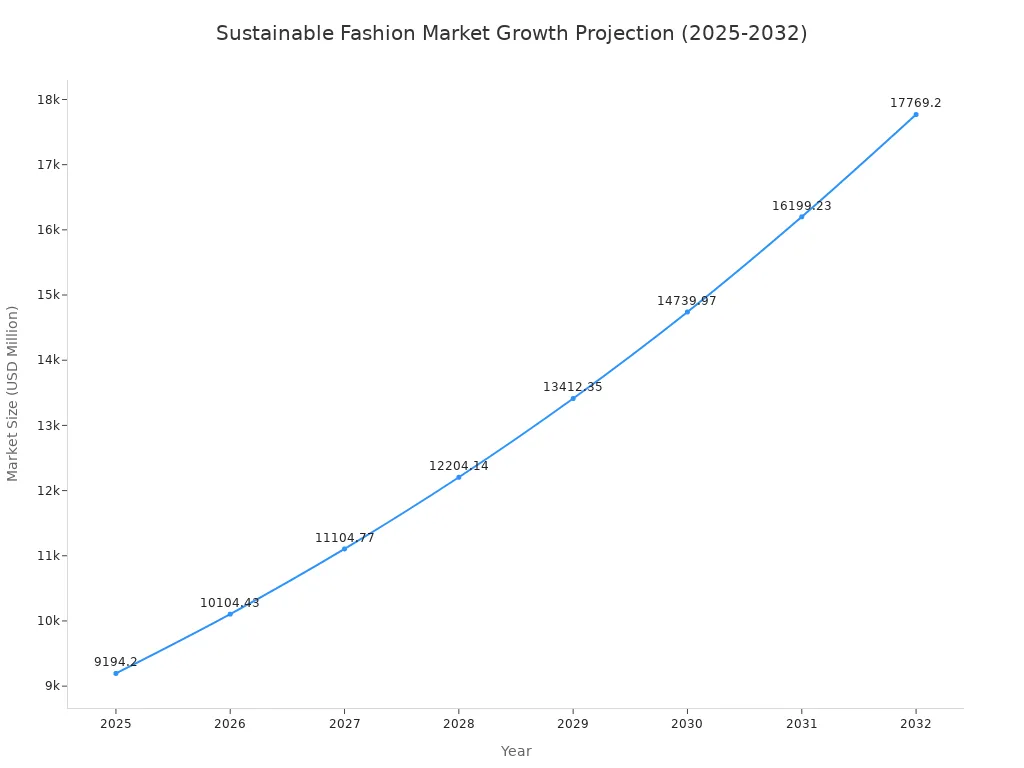
Your decision to buy sustainable bamboo clothing adds to this positive trend. You join an eco-conscious lifestyle. You can see the benefits of a sustainable lifestyle. Many brands now offer sustainable bamboo fabric options. This shift towards a sustainable lifestyle is clear.
- Zara: Uses organic cotton and Tencel in its “Join Life” plan.
- H&M: Features sustainable bamboo fabric in its Conscious Collection.
- Patagonia: Integrates recycled materials and promotes a sustainable lifestyle.
By choosing certified bamboo cloth fabric, you get an environmentally friendly product. This sustainable bamboo fabric offers many benefits. Your purchase of sustainable bamboo clothing supports a better future for eco-friendly fashion. This environmentally friendly bamboo fabric is part of a sustainable lifestyle. Your sustainable bamboo clothing is a smart decision. This sustainable bamboo fabric is a great choice. Your sustainable bamboo clothing makes a difference. This sustainable bamboo fabric is a key part of sustainable bamboo clothing.
FAQ
Is all bamboo fabric eco-friendly?
No, not all bamboo fabric is eco-friendly. You will find its sustainability depends heavily on the production process. Bamboo viscose uses harsh chemicals that can harm the environment. You should choose bamboo lyocell for a truly sustainable option that protects our planet.
What is the best type of bamboo fabric to buy?
You should prioritize bamboo lyocell. This fabric uses a modern, closed-loop process that recycles over 99% of its water and non-toxic solvent. Your choice supports a manufacturing method that is safer for workers and prevents pollution, making it the most sustainable option.
How should I care for my bamboo clothing?
You can extend the life of your bamboo clothing with proper care. Wash your garments in cold water on a gentle cycle. You should hang them to dry instead of using a machine dryer. This simple routine saves energy and keeps the fabric soft.
Can I compost my old bamboo clothes?
Yes, you can compost bamboo clothing if it is made from 100% bamboo fabric. It will naturally biodegrade and return to the soil.
Tip: Blends with synthetic fibers like spandex will not fully decompose. You should check the label before composting to ensure the best environmental outcome.


